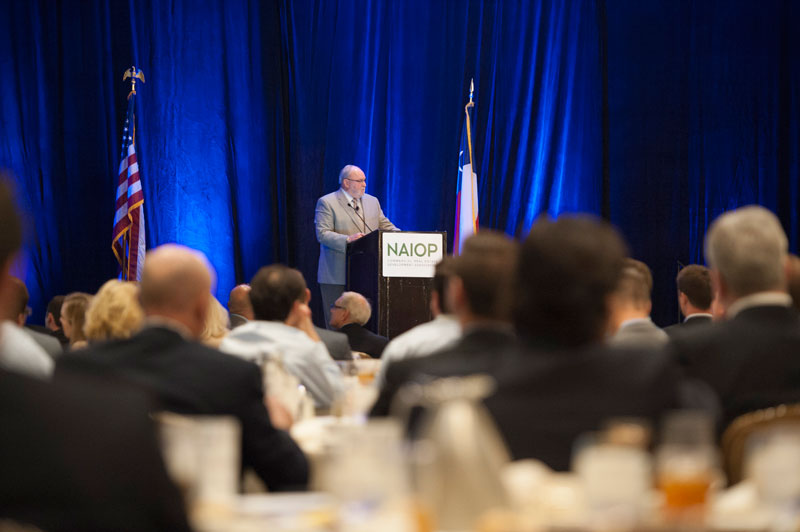What makes something a game-changing, money-making idea for the best and brightest real estate professionals, based on the best and brightest retail firms doing e-commerce? James Tompkins, Ph.D., CEO, Tompkins International, tackled this trillion-dollar question during his keynote address, “E-commerce Driving Industrial Opportunities,” at I.CON ’16: Impact Projects.
Game changers see something that others don’t, in an actionable and transformational way, Tompkins said. It cannot be the same old, same old – it needs to be beyond transformational to the point of metamorphosis. He identified cross-border commerce, “get local” e-commerce and delivery strategy, and omnichannel as three key game changers.
Cross-border Commerce:
Cross-border commerce – for example, when the customer is in China but the seller, brand and parent are in the U.S. – provides not only more shoppers, but shoppers who spend on average twice as much as your typical shopper.
Cross-border purchasing power:
- 48 percent of cross-border commerce purchases will come from the Asia-Pacific Region.
- China will buy the most cross-border commerce:
- 200 million customers in 2020.
- $245 billion in purchases in 2020.
- Europe will be second in cross-border commerce purchasing with North America in third place.
- The U.S. will be a leading destination for cross-border commerce at $485 billion in 2020.
- Clothing and footwear represent 39 percent of online cross-border commerce purchases. Electronics are second at 26 percent. Wide selection is key.
What does this mean for commercial real estate?
- $485 billion in 2020 of e-commerce orders from U.S. companies – many of which will be picked, packed and exported in U.S.
- $140 billion in 2020 of e-commerce orders from non-U.S. companies – many of which will be picked, packed and shopped from non-U.S. locations and shipped into the U.S.
- Most cross-border commerce export and impact orders will travel by air.
- There will be a substantial increase in e-commerce fulfillment centers (FCs) around major international airports.
- For cross-border commerce orders filled from within countries there will be a significant growth of FCs around container ports.
Get Local:
Amazon has changed the game for e-commerce and delivery expectations, Tompkins said, putting the customer in charge and establishing a remarkable supply-chain network. This revolutionary retailer – with 300-500 million SKUs and 75,000 more added every day – embraces a “Get Local” strategy that emphasizes the instant gratification of “click to doorbell;” addresses increasingly speedy delivery expectations; and focuses on customer personalization, service and loyalty: I want it, when and where I want it – once you tell me the price.
Historical view of e-commerce delivery expectations:
- Fast for 2013 was 4 days.
- Fast for 2014 was 3 days.
- Fast for 2015 was 2 days.
- Fast for 2016 is next day.
- Expectation often in 2017 is same day.
Omnichannel:
Business as we know it has changed forever with the advent of omnichannel commerce, but are companies prepared for the impact?
- Only 5 percent of companies has a fully executed omnichannel strategy.
- 83 percent of CEOs believe supply chain not optimized to meet omnichannel.
- 94 percent of retail decision-makers felt their company faced significant barriers to becoming integrated omnichannel operators.
- 71 percent of shoppers regard in-store stock level information as being critical to their purchase decisions, but less than a third of all retailers are able to provide such information.
“Logistics real estate is going to be a wild ride for the next five years, driven by: cross-border [commerce], get local and omnichannel,” Tompkins said. “I recommend you hang on to your hats.”
 This post is brought to you by JLL, the Social Media and Conference Blog sponsor of NAIOP’s I.CON ’16: Impact Projects. Learn more about JLL at www.us.jll.com or www.jll.ca.
This post is brought to you by JLL, the Social Media and Conference Blog sponsor of NAIOP’s I.CON ’16: Impact Projects. Learn more about JLL at www.us.jll.com or www.jll.ca.














